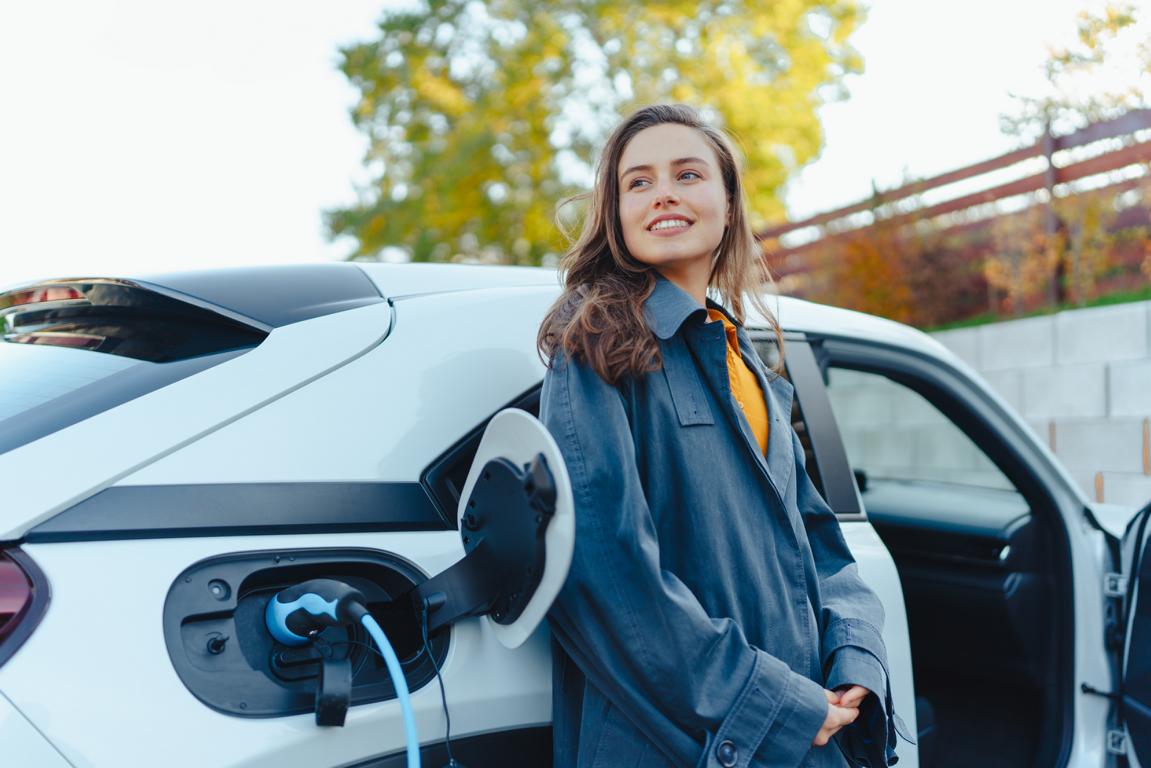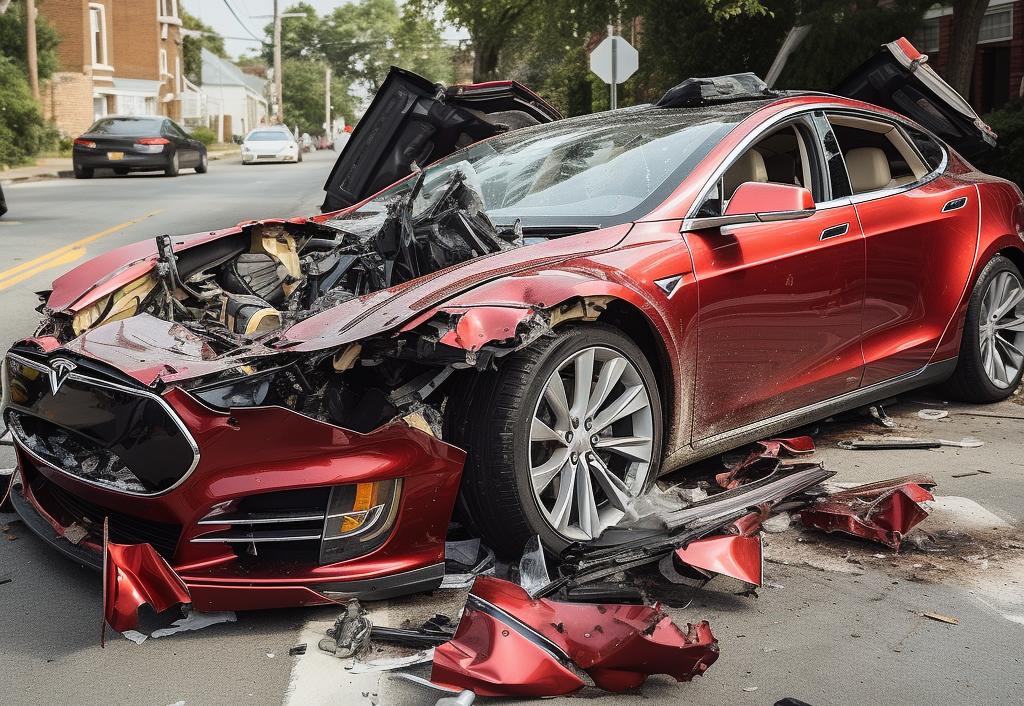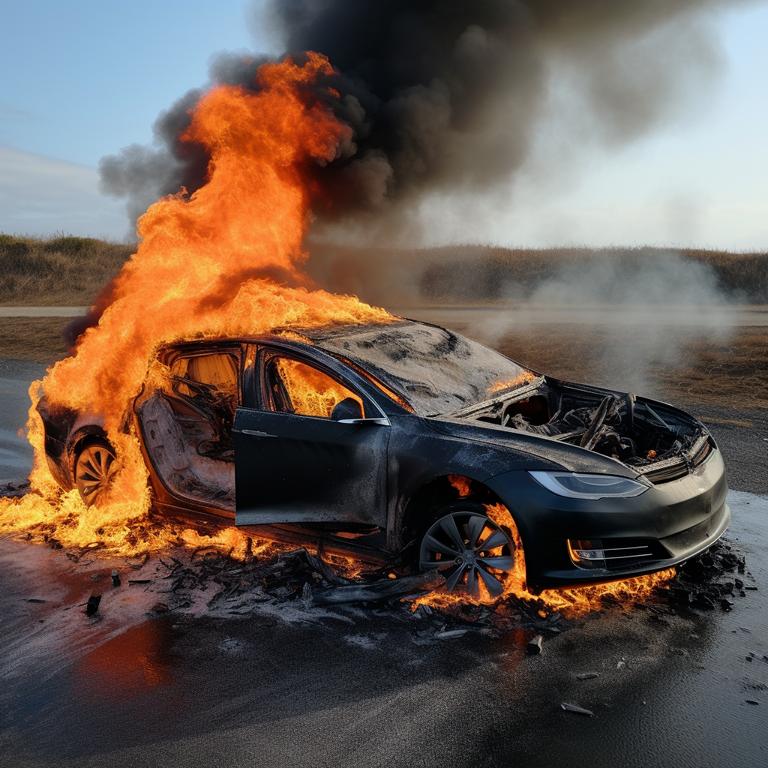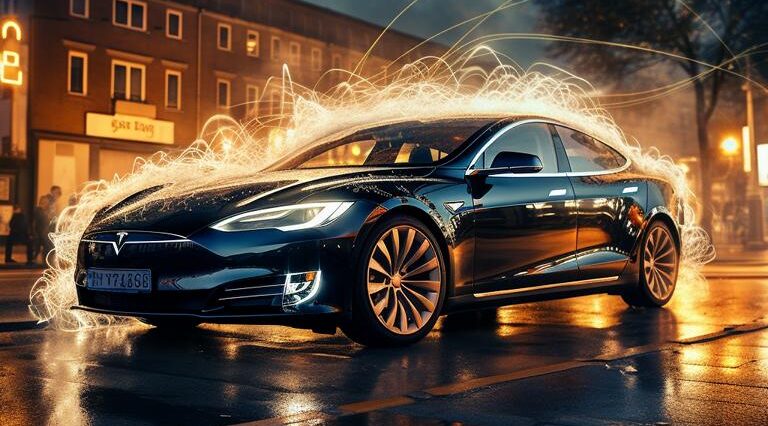
Road safety is an important issue for the automotive industry. Intelligent safety systems can now prevent accidents or, in an emergency, protect passengers from something worse. In 2022, around 2,4 million traffic accidents were registered in Germany and the 2023 figure will be similar or higher. That may sound like a lot, but it is the development of the last 60 years clearly shows that the number of traffic accidents has fallen. But of course this still needs to be reduced.
Crash safety of electric cars
The first crash test was carried out by the automobile manufacturer Mercedes-Benz in 1959 and today vehicles still have to undergo various tests in the prototype phase in order to prove their crash safety. A collision is brought about consciously and in a controlled manner under realistic conditions. The crash test organization Euro NCAP (European New Car Assessment Program) was founded in 1996 and is the most important consumer protection institution in the automotive industry. The safety of a vehicle is assessed in the form of stars and the test results are then published - because crash safety is an important criterion when buying a car.
The term crash safety refers to the ability of a vehicle to protect its occupants in the event of an accident. Crash safety therefore plays a significant role in reducing the number of traffic accidents. In the future, automobile manufacturers will therefore continue to expand safety concepts and develop new technologies - albeit with new challenges. The expansion of electromobility is in full swing, which of course means that crash safety must also be guaranteed for electric vehicles. What is to be considered? Are there any difficulties in this regard for which there are no solutions yet? We have dedicated ourselves to the topic and make it clear that safety is anything but neglected in electric vehicles too.
The safety of the electric car – these are possible challenges
Is vehicle safety really related to the drive system? E-cars have various characteristics that can impact road safety and that must be taken into account when developing safety technologies. But according to the German testing company DEKRA, electric cars are just as safe as vehicles with combustion engines. This may surprise some people. From a burning battery to electrocution, electric vehicles are often associated with various safety risks.
Recently, the automobile manufacturer Mercedes-Benz carried out a head-on crash involving two electric vehicles. The test took place in public and represented a common accident scenario. The EQA and the EQS SUV drove head-on into each other at 56 km/h. Even though the deformation of the vehicles looked frightening, it proved that the energy of the impact could be effectively dissipated through the deformation of the two vehicles. The safety passenger cells remained intact and the doors opened after the collision.
By the way, the safety of the battery is often questioned. Is it really that flammable in a traffic accident? The risk of a fire is actually very low because the electric car's high-voltage system switches off immediately in the event of an accident using integrated crash sensors. Just like vehicles with combustion engines, electric vehicles must meet many legal regulations when they are first registered - primarily in terms of safety. Since the power supply to electric vehicles is immediately interrupted after an accident, the vehicles usually perform better in crash tests than combustion engines. The battery is well stowed away, important components are separately protected and waterproof.
However, if significant protective mechanisms are damaged in a collision, a fire can occur. Then it actually becomes problematic, because extinguishing an electric car is much more difficult than with a combustion engine. It is important to cool the battery's storage cells, but since the battery is well protected in the undercarriage of the vehicle, it is difficult to get there.
The high-voltage system is also automatically switched off in the event of flooding, so that there is no increased risk of electric shock. However, combustion engines and electric cars should generally not be driven when the water level is high, as this can cause serious damage to the vehicle.
Crash test standards for electric cars
The crash test organization Euro NCAP regularly tests new electric vehicles for safety. In order to ensure the best possible safety, the evaluation criteria are continually adjusted and tightened. Incidentally, these do not differ from those that are checked for combustion engines. In these four categories The respective electric vehicles are extensively tested:
- Occupant protection
- Child safety
- Pedestrian protection or protection for unprotected road users
- Active safety
What to do in the event of an accident with an electric car?
In the event of an accident with an electric car, you generally don't have to react any differently than in a crash with a combustion engine. As mentioned before, the high-voltage system turns itself off independently, so any electrical hazard can generally be ruled out. Importantly, only automotive specialists who are familiar with electric vehicles should carry out work on electrically powered vehicles. You should also stay away from high-voltage cables; these are characterized by the fact that they are covered with orange cable protection.
The load limit of the battery
Even if the high-voltage system is switched off in the event of an accident and no electrical hazard is to be expected, it should not go unmentioned that a collision can have an impact on the electric car's battery. And in exceptional cases these can also entail dangers. The Fraunhofer Institute researches and develops in a wide variety of areas, including safety.
The institute examined the batteries of electric vehicles, with the aim of making them safer in the long term - because despite many protective mechanisms, there are risks that can have a significant impact on vehicle safety. For example, if there is external deformation of a charged cell, a short circuit can occur inside the battery. Heating the cell can cause further chemical reactions to occur and ultimately ignite individual materials. This means that a particularly serious crash can actually set an electric vehicle on fire. Thanks to research by the Fraunhofer Institute, automobile manufacturers are able to adapt safety systems accordingly in order to make the battery of the electric car increasingly safer. For example, it has been found that reactions often only occur days after the accident. It is therefore advisable to have the battery examined by specialists after an accident.
Safety measures for electric cars
As I said - electric cars offer just as much safety as vehicles with combustion engines, so no special regulations are necessary for electric vehicles. However, to protect the battery from shock, there are important requirements that must be met. For example, the battery is located isolated in the vehicle's underbody. The placement in the vehicle floor ensures a low center of gravity, which in turn improves vehicle stability.
The battery is also surrounded by a very stable battery case to avoid deformation during hard acceleration. The battery can survive minor accidents without any problems; in the event of major accidents, the high-voltage system's shutdown concept is activated, which reliably prevents far-reaching dangers. All of the high-voltage components are securely installed and not easily accessible; they are also identified by the orange casing.
Many electric vehicles are equipped with thermal management systems that can control the temperature of an electric car's battery. This can prevent overheating. The battery management system (BMS) monitors the performance of the battery and can thus maximize its service life. All of these measures made it possible to significantly reduce sources of danger. Advanced safety systems also ensure that accidents can generally be avoided. However, both vary from manufacturer to manufacturer.
Conclusion
- Thanks to advanced technologies and safety measures, electric cars have a high level of crash safety and do not differ significantly from combustion engines in this respect. As is often the case, there are exceptional cases - because the deformation of the battery is a safety risk. But experts agree and crash tests prove that electric cars are generally safe. It is important to familiarize yourself with the security systems so that you can react correctly in an emergency. Regular and professional battery inspection can prevent long-term damage.
thematically relevant posts
In our category Tips, products, information & Co We have reviews of car or accessories manufacturers, new ones Tuning Wiki Terms or one or two leaks published.
 tuningblog.eu Your magazine about tuning the car
tuningblog.eu Your magazine about tuning the car




